Earth is round, water flows downhill, and oil-fired systems don’t modulate. Ok, so there are a few rare exceptions to the last one. Sort of.
This unique, staged-fire, oil installation recently proved its worth at the Brothers of the Sacred Heart Provincial Community, in Pascoag, Rhode Island. It’s a retirement community for Catholic School clergy, but is often referred to as a monastery.
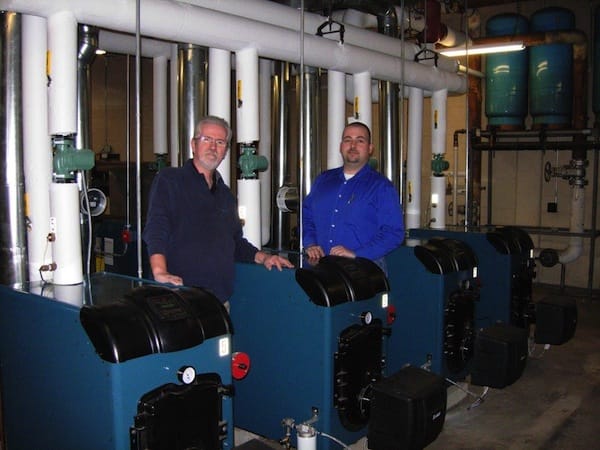
Glenn Stanton, manager of training and technical development for US Boiler (left) and Matt Plante, equipment specialist for Petro, stand in the finished mechanical room.
In rural corners of Rhode Island, natural gas lines are still a pipe dream. But the solution that the monastery found leaves them at no disadvantage compared to the folks in the city.
As the 50,000-square-foot facility’s two, 59-year-old boilers became needier for maintenance attention every year, the monastery’s number of live-in clergy has also dwindled. Rooms that were previously conditioned are now turned down for most of the heating season.
What the parish needed was an oil system that could provide enough energy to heat the entire structure for special events, but yet coast along at low-load without short cycling. Petro Home Heating & Air Conditioning has supplied oil and serviced the monastery’s system for years, so when it came time for a retrofit, the company already knew exactly what was needed.
Smaller packages
“We proposed to pull out the two, 1 million BTU boilers, and install eight, 230 MBH Burnham MPO-IQ boilers, linking them all together with a tekmar multi-stage boiler control system,” said Matt Plante, equipment specialist for Petro. “We’ve exchanged big boilers for numerous small oil boilers in apartment buildings before, but never at this scale.”
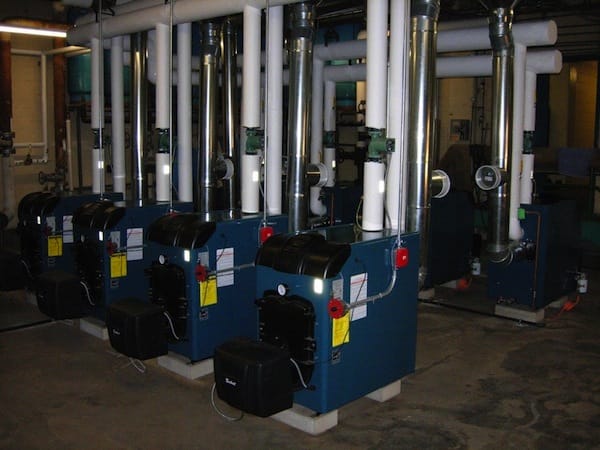
Taco circulators on every boiler add its heat input to one of the two, three-inch boiler loops, which tee into a common four-inch supply via primary/secondary piping.
A mix of radiation is used throughout the building, including both residential and commercial fin-tube radiators, hydro-air coils, and cast-iron radiators. Three-way valves and constant-pressure pumping keep the distribution system relatively simple.
“A challenge going into this project was simply convincing facility managers that they could maintain the same level of comfort, with less fuel expended, using smaller boilers,” continued Plante. “I guess if you don’t know any better, and you’re used to looking at two large commercial units, an MPO-IQ looks pretty tiny in comparison. But, when they heard just how much they could save in heating costs, their reservations disappeared.”
Unlike the old boilers, the MPO-IQ is a three-pass, cast-iron sectional boiler. It’s 87% efficient, and offers a control system the likes of which is typically reserved for boilers in a higher price bracket.
Divine design
“Glenn Stanton, manager of training and technical development for US Boiler, was absolutely instrumental to the success of the entire job.” Plante continued. “He produced the venting and piping diagrams, and calculated the flow rates. He was there every step of the way.”
Luckily for Stanton and the Petro team, the mechanical room was perfect for their installation; plenty of floor space and high ceilings. Best of all, there was a set of double doors leading straight out to the parking lot.
And straight out the old boilers went. The MPO-IQs were set right in place with a fork lift as soon as they were delivered by The Portland Group, in Providence. The entire mechanical room was re-piped to accommodate the change. For ease of service, ample space was left between the boilers when they were placed in rows.
A tekmar Boiler Control 268 regulates a single water temperature through outdoor temperature reset, as well as staging and rotating the eight boilers to properly match the building heating demand.
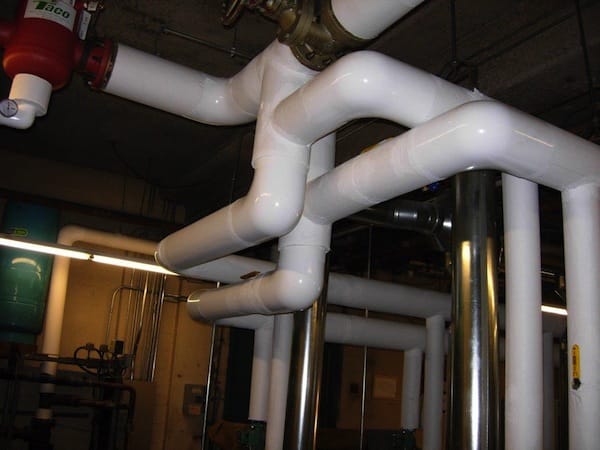
A large Taco 4900 air and dirt separator is installed on the secondary piping to keep the hydronic system in an anaerobic state.
Taco circulators on every boiler add its heat input to one of the two, three-inch boiler loops, which tee into a common four-inch supply via primary/secondary piping. This common supply line is served by a Taco 4900 air and dirt separator. Stub-outs were installed for the possibility adding DHW to the boiler system in the future.
Each row of four boilers is served by a 14-inch common exhaust vent, which leads to the building’s existing chimney. Even if all the boilers are running, the mechanical room provided adequate draft without needing to make any changes.
A plan comes together
“It’s impressive how smoothly and quickly it came together,” said Plante. “The boilers were fired about six weeks after they were ordered. Demolition, wiring, venting, piping, control setup; it all went off without a single glitch.”
Because of the job’s uniqueness — from the multiple oil boiler approach, to the varying types of heat distribution — its success was a team effort if ever there was one. Bruce Crawford, equipment and installation manager for Petro, and Dave O’Driscoll, Petro’s installation field supervisor, put countless hours into planning and coordinating every facet of the project. Choosing the correct install crew members and subcontractors was key.
Both Stanton and Mike Morrissey, sales representative for US Boiler, were on-site to assist with the programming of the controls and optional IQ cards; the boilers were equipped with manual-reset low-water cutoff and auxiliary high-limit cards.
“For me, the rewarding part of returning to the jobsite was comparing the installation to the drawings I did,” said Stanton. “Everything was identical to the diagrams, and the work was impeccable.”
Petro expects the monastery’s fuel savings to equal or exceed that seen on other staged-MPO-IQ jobs they’ve completed in apartment buildings; roughly 45%. At a time when most consumers are jumping on the gas bandwagon, the Northeast’s largest heating service company is making winning plays with oil.

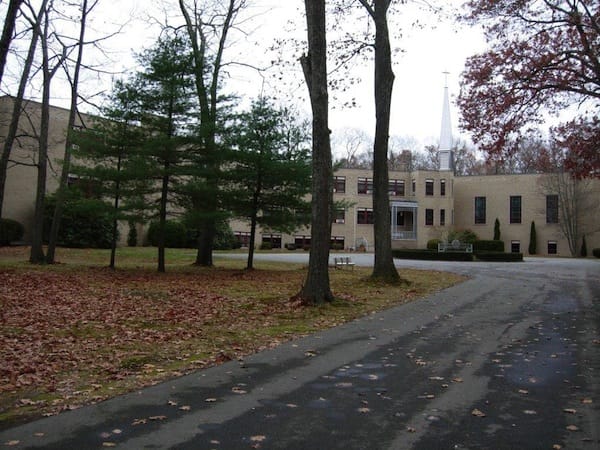
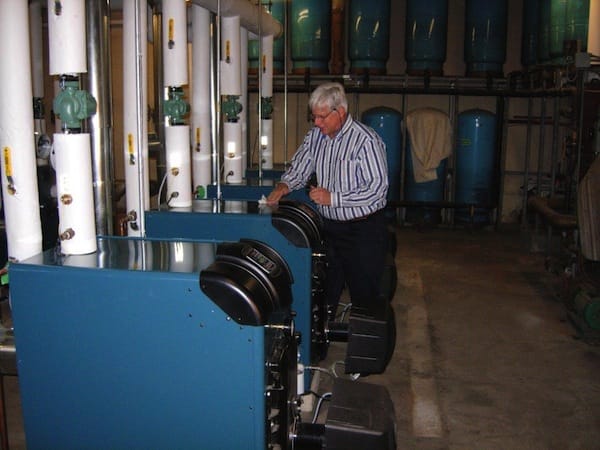
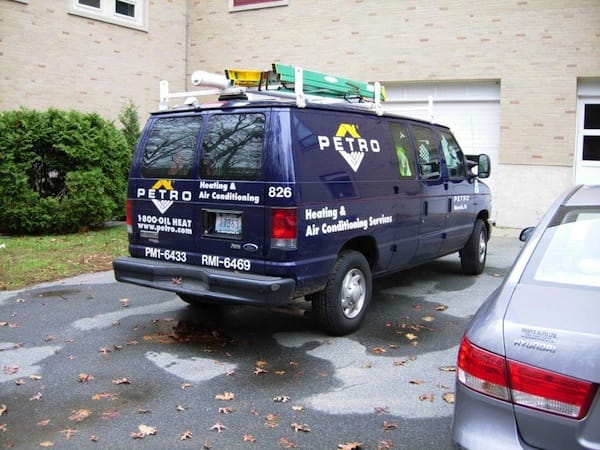
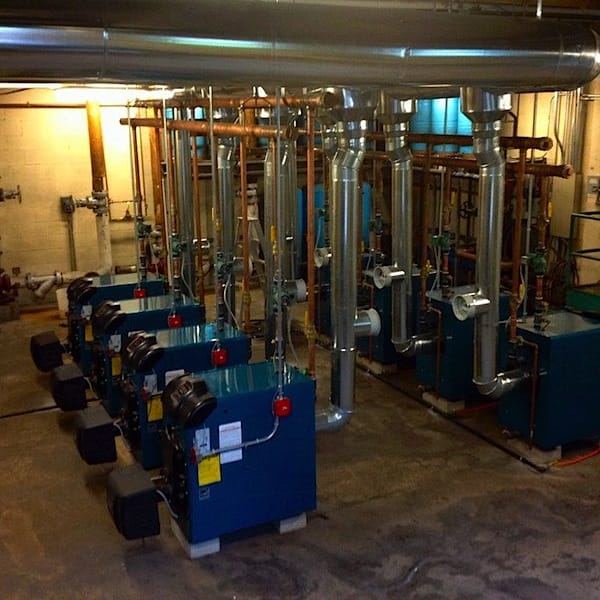


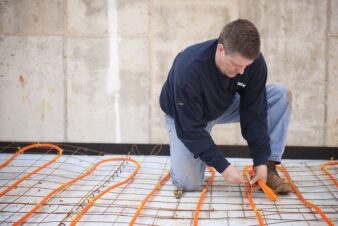
Join the conversation: